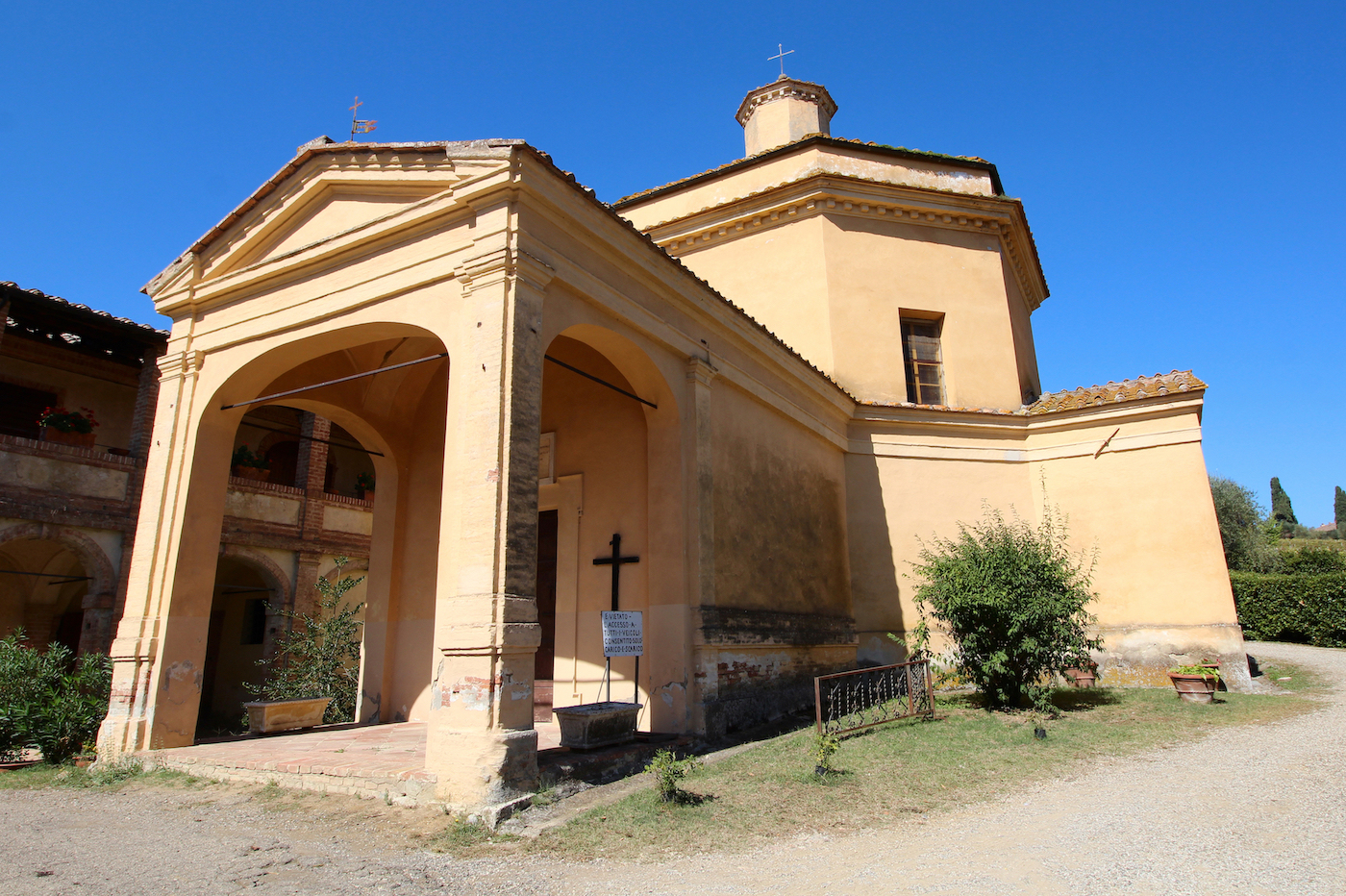7.8 The Arbia coloured red
In the heights, there seems to be a swirling paraphernalia; in the lowlands, the houses tumble down one on top of the other like a landslide. Or you can count up to ten rows of roofs, longer and longer, taller and taller, flanked by other rows that run perpendicular to the first. The Torre del Mangia emerges placidly from all that clutter. And all around the city, olive and cypress trees nestle among the houses, as if, having come from the countryside, they no longer want to go back.
(FederigoTozzi, Con gli Occhi Chiusi)
Start cycling from the Barriera di San Lorenzo, downhill, and then climb the hill overlooking the current railway station and the railway line, taking the road through the entire Scacciapensieri district. A stop is a must at the Basilica dell’Osservanza, from where you can enjoy a magnificent view of the city stretching out before you. You are now on the Colle della Capriola, and here, next to the convent, stands what is perhaps the most important and historically rich church outside the city walls.
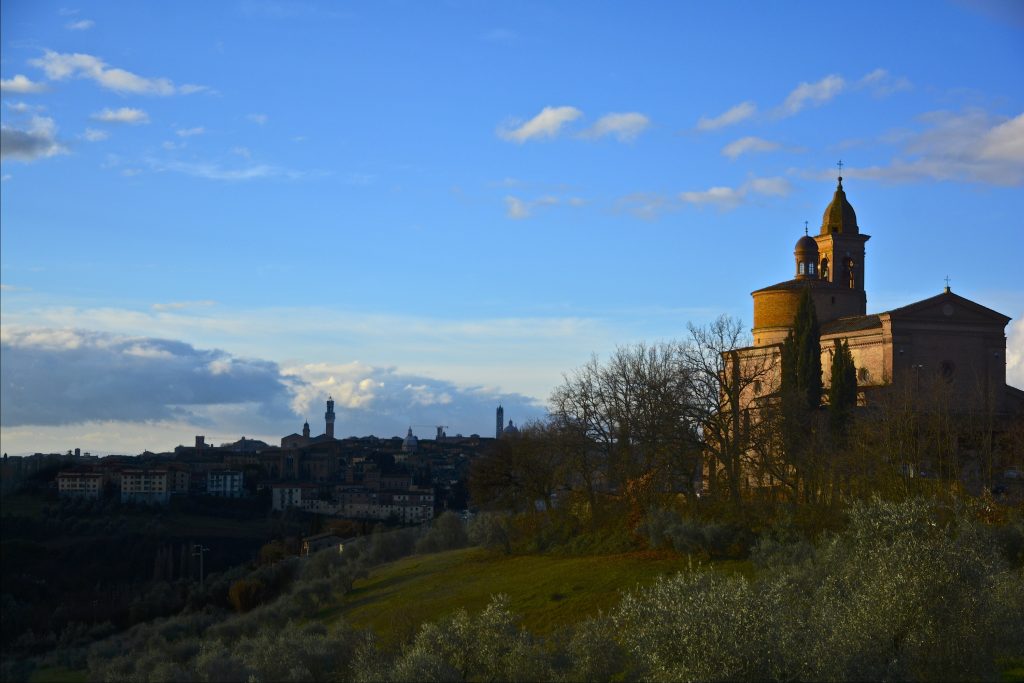
Ⓒ Bjørn Christian Tørrissen
Once you reach the Provinciale Chiantigiana road, continue to the left, cycling along a route that is never flat and that, after passing the villages of Ponte a Bozzone and San Giovanni, leads to Pianella. Here, immediately after the bridge over the Arbia river, follow the signs for ‘Monteaperti’, along Provincial Road SP 62, which climbs for about a kilometre. You are riding along the ridge territory that separates the Chianti from the Crete Senesi, a sort of ‘middle ground’ that highlights the DNA of Chianti, made up of alternating wooded areas and modern cultivation, villages clinging to the hills, fortresses, and castles, and that of the Crete, a land of infinite voids, crags, sparse strips of green, and isolated dwellings that seem immersed in a nothingness that stirs the soul for its rugged beauty.
Having passed San Piero in Barca and the turnoff on the left that leads to Castelnuovo Berardenga, continue cycling along a rough but never particularly demanding route. This brings you to the hamlet of Monteaperti, which has undergone a recent process of urbanisation; the village is not, however, to be confused with the better-known and more famous site of the same name, where on 4 September 1260 the ‘scempio / che fece l’Arbia colorata in rosso’ (‘destruction / that coloured the Arbia red’) took place, as the Supreme Poet (Dante Alighieri) recounts in Canto X of the Inferno. Yes, you are at the site of the famous battle between the Ghibelline army of Siena and the Guelph army of Florence, which was so much talked about, extolled and celebrated in Siena for its victory over its historic Florentine enemies.
The site is commemorated by a pyramid-shaped memorial stone that stands, surrounded by cypress trees, high on the hillock of the same name and can be reached by following a macadam turnoff a few hundred metres away from the asphalt road.
Also worth visiting in the area of the famous Battle of Montaperti are the Church of Sant’Ansano in Santa Maria a Dofana and the Acqua Borra thermal mineral spring.
The fonte termominerale dell’Acqua Borra (thermo-mineral spring of Acqua Borra), already known to the Etruscans and the Romans, was extolled in various treatises by doctors and philosophers as water with miraculous effects; with regard to this, the Sienese Leonardo Terucci wrote in 1647 in his ‘Trattato dell’Acqua Borra’ that ‘it seems that this water is given by Heaven as a precious medicine, to cure almost all the ills of the body’. The site, absolutely charming, is located just off the course of the Malena stream and is identifiable by an isolated farmhouse leaning against a travertine wall, next to which the thermal waters flow, feeding a square pool. In the 2014 project of the Municipality of Castelnuovo Berardenga, the Acqua Borra was to become (will become?) the heart of a recreational-thermal park that includes a rest area for campers, a children’s play area, a restaurant, and other facilities to encourage tourism.
The last few kilometres of the itinerary pass through the towns of Arbia (where a Leopold signpost dating back to 1840, also known as the ‘Lorenese’ by Leopold II of Lorraine, is on display) Taverne d’Arbia, and Ruffolo.
Barriera di San Lorenzo
The Barriera di San Lorenzo (Barrier of San Lorenzo), better known as ‘Le Lupe’ (the she-wolves) in Siena, is a passageway resulting from the cutting of the city walls in the mid-19th century to connect the historic centre with the first railway station. The name ‘San Lorenzo’ is derived from a church, no longer in existence, which received pilgrims in the year 1000, while the ‘barriera’ is the gate at the point where duty was once paid to enter the city, with two ‘lupe’ on either side that can be seen on the remains of the walls.
The ‘strada ferrata centrale’ (central railway line), provisionally built at Mazzafonda, was inaugurated on 14 October 1849 in the presence of the Grand Duke, his family, and all the local authorities, and was situated further north than the present railway station. It served the Siena-Poggibonsi line, and later, the Siena-Empoli line, a line that was only completed with the construction of the Montarioso tunnel, also known as the Galleria del Granduca (‘Grand Duke’s Tunnel’), which was the longest in Italy at the time at 1,516 metres.
Designed and built by a famous architect of the day, Giuseppe Pianigiani, the station was so well received that the following Sunday, to celebrate the event, an additional Palio was held in the presence of the Grand Ducal family. Everything had been ‘pre-arranged’ so that the victory would go to either Tartuca or Aquila, Contradas whose colours and coats of arms were favoured by the pro-Lorraine aristocrats who attended the race; instead, Oca won, thus exalting the liberals who saw in its colours—green, red, and white—the symbol of Italian unity and independence.
With the new Siena-Empoli line, it was possible to go to Florence by train in two and a half hours via the Empoli connection, thereby saving more than three hours compared to the time taken by the stagecoach.
Basilica dell’Osservanza
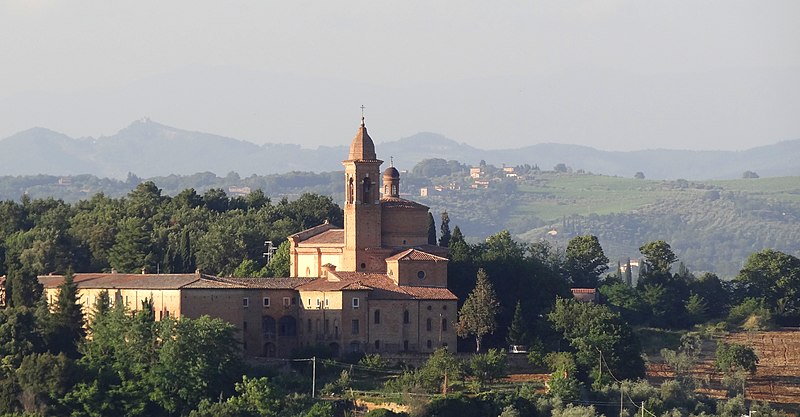
Ⓒ Antonio Cinotti
It was St Bernardine, a Franciscan friar minor, a histrionic and provocative preacher, who wanted a monastery to be built on this hill dominated by peace and silence, in the ‘spirit of the Observants’. The Saint ensured that the oratory, built in the 14th century by the Sienese patrician Stricoccio Marescotti and then dedicated to the hermit St Onofrio, would be handed over to the Observants; he then started the foundation of the convent, whose church was consecrated to him following his canonisation in 1451. His cell has been recreated inside the convent, while the museum set up in the sacristy rooms houses some precious relics, such as his robes and the tablet with the name of Jesus that Bernadine used during his public sermons.
In 1474, Pier Paolo d’Ugolino Ugurgieri promoted work on the church under the direction of the ‘architector’ friars and the collaboration of two distinguished architects, Francesco di Giorgio Martini and Giacomo Cozzarelli, to whom we owe the 16th-century additions.
The Basilica, simple and virtually bare on the outside, is elegant and harmonious on the inside, in typical Renaissance style, a veritable treasure chest of art with works by the Della Robbia family and a group of sculptures in polychrome terracotta; the ‘Tomb of Pandolfo Petrucci’, the leading figure in Sienese history at the turn of the 15th and 16th centuries, is Cozzarelli’s major sculptural creation.
Almost completely destroyed by bombing in 1944, the Basilica was rebuilt just five years later, faithfully following the original design and using the original materials as much as possible. Its external appearance, as mentioned above, is characterised by simple and harmonious forms: the brick façade is fronted by a portico, while the upper part ends with a tympanum featuring the sun in the centre with the monogram of St. Bernadine; the bell tower is a late 17th-century restoration. The interior follows the Renaissance canons of order, harmony, and proportion, with a single nave enhanced by four chapels on each side; the presbytery, which is higher than the nave, is topped by a dome.
BOMBS OVER SIENA
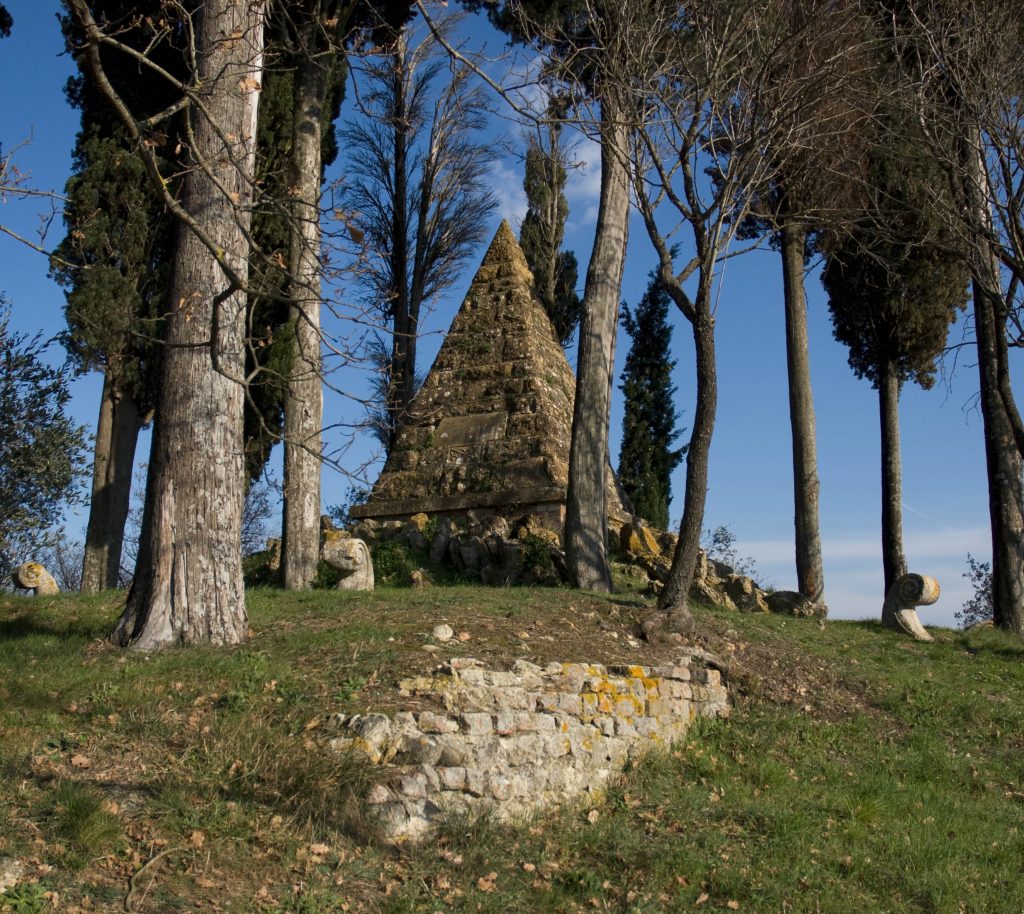
Ⓒ VignacciA 76
” The bombs were dropped at 12.38 pm. Visibility was poor, due to the clouds, and the target was largely missed. Numerous bombs fell on Basilica dell’Osservanza, destroying it, as well as on an area between Le Scotte, S. Eugenia, and Due Ponti. There were 25 fatalities and about forty injured’. So writes the historian Alessandro Orlandini about the first bombing of Siena on 23 January 1944. An indignant and sardonic article about the event was published in the newspaper ‘La Nazione’, which is curious to read today. It attributes the destruction of the Basilica not to a tragic error in aim, but to a voluntary act dictated by the ‘merciless war of the Anglican Church against the Church of Rome’.
The bombing of 23 January was followed by that of 29 January, which hit the railway station, and those of 8 and 16 February and 11 and 22 April, which caused more deaths and injuries; numerous bombs, some of which fortunately remained unexploded, fell in Piazza Duomo, in Via Diacceto, in the courtyard of the Pinacoteca, at Porta Ovile, and at Porta Pispini. In the bombardment of 11 April, in an attempt to hit the railway line, several buildings to the north of the city were hit, including one just inside Porta Camollia.
As is evident, Siena was not sheltered from the bombs; contrary to what the town’s folklore has long propagated, the Allies, never recognised its status as a ‘hospital city’ since it was not demilitarised, which is an indispensable condition, laid down by international standards, for an urban centre to be recognised bilaterally as open.
On the top of the Colle di Montaperti (hill of Montaperti), it is said that the ancient 11th-century castle owned by the Berardenghi family existed at the time, and it is here that legend celebrates the famous battle (although studies, as we have written elsewhere, now suggest a different location for the epic battle, the memory of which is an integral part of Siena’s ‘mental heritage’: every time the day of 4 September 1260 is evoked in the city, it is not a corpse that is ‘exhumed’, but something that is a ‘living’ element of one’s being from Siena. Among other things, the battle of Montaperti was not only the culmination of the rivalry between the two historic enemy cities of Siena and Florence, but represented a great page in the history of Italy).
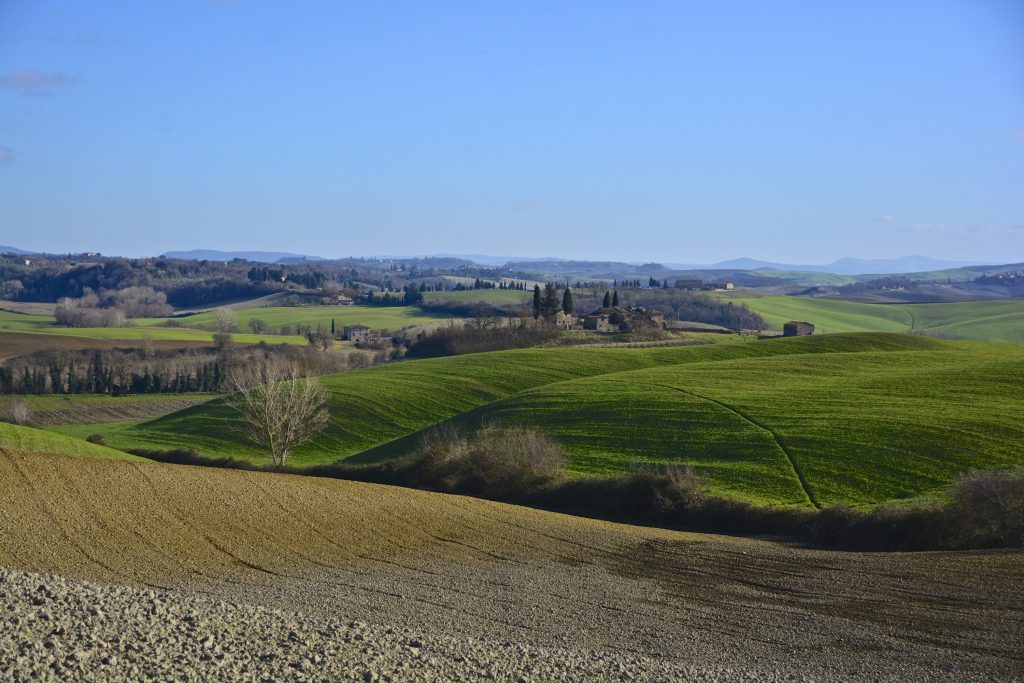
ⒸAntonio Cinotti
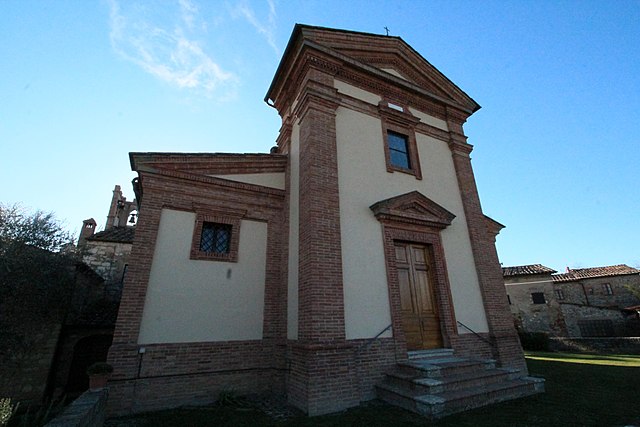
ⒸLigaDue
The Romanesque Church of Sant’Ansano is believed to date back to the 7th century and, since 1107, has housed a precious reliquary containing the left arm of Ansano, the patron saint of Siena, who, according to folklore, was martyred nearby. There was likely a Jesuit convent attached to the church: many of the coats of arms inside can be traced back to this Order, while in the square opposite there is a 16th-century monastic well. Transformed several times over the centuries, the church took on its current appearance in 1930 following work done by Egidio Bellini, who also designed the façade with the bell gable in the centre. Inside are the 18th-century Madonna col Bambino e Santi (Madonna and Child with Saints) attributed to the Sienese painter Galgano Perpignani and a Madonna col Bambino (Madonna and Child) attributed to Lorenzo Rustici.
The octagonal Oratory of Sant’Ansano, restored several times (the last ones were carried out in 1931 and 1980), was erected on the site where legend has it that the saint known as ‘il battezzatore dei senesi’ (‘the Baptizer of the Sienese’) was martyred in 304 AD.
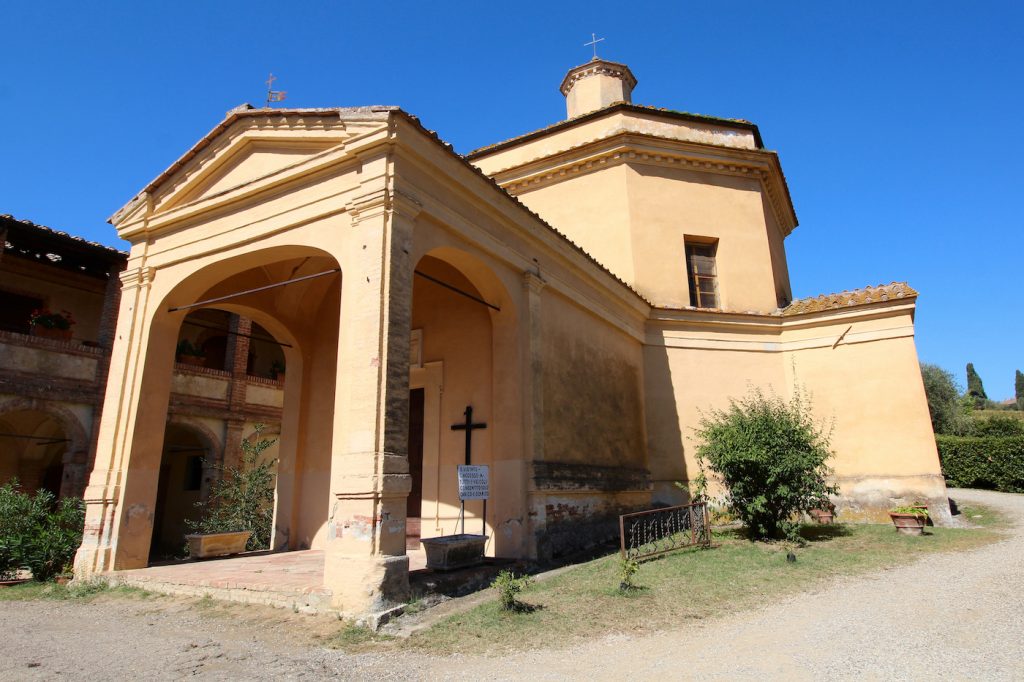
ⒸLigaDue
